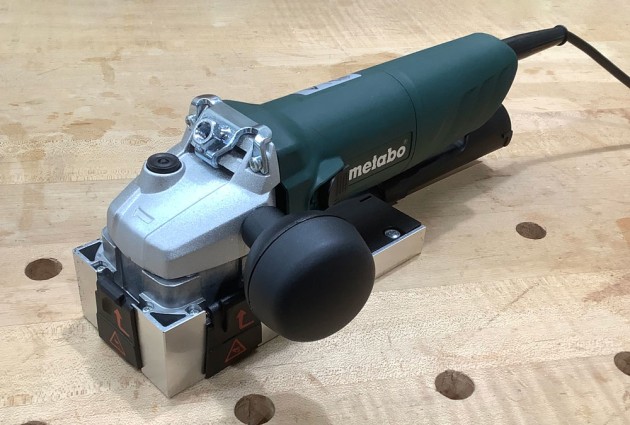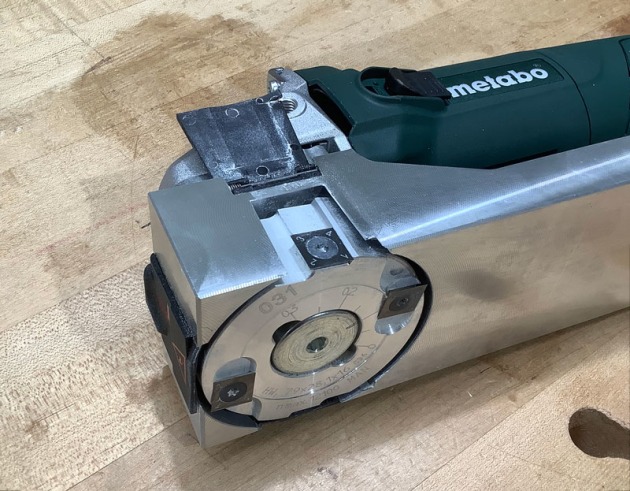TESTED: Metabo LF724S Surface Paint Remover
Review and photos: Damion Fauser
Anyone who has ever had to strip paint or damaged clear coats from a sizeable surface area will immediately see the utility of this tool. With an 80mm diameter rotating cutterhead set inside one end of an overall base surface area of 190 x 80mm, this machine is designed to strip paint and other coatings from flat surfaces. And I can report that based on my trials, it performs this task quickly, cleanly and safely.
The cutterhead is adjustable independent of the fixed metallic flat reference base surface, creating the required offset to perform the stock removal. It features two square carbide insert cutters in the horizontal plane that perform the primary surface cutting. The cut depth adjustment in the horizontal plane is 0.0–0.3mm.
I set up a test panel with five heavy coats of spray enamel paint and at 0.2mm the tool completely and effortlessly removed the paint and some of the underlying wood, leaving a clean surface with some expected rotary milling marks from the cutting action. Accordingly, some further finish sanding will be required when refinishing with clear coats. Adjusting the cut depth is fast and easy with an Allen key (not supplied).
The 0.0mm setting is important, as to fully complete a surface the user will need at some point to register the base of the tool on a previously worked surface. By then setting the tool to 0.0 cut depth, the tool will correctly register on the shallower clean surface and remove the remaining paint to the correct depth.
There is a second set of two cutters on the vertical edges of the block to allow cutting on vertical surfaces and into corners/rebates up to a height of 28mm, which is a very clever and useful capability addition. When working on flat surfaces these cutters are safely concealed by a series of three spring- loaded pivoting flaps. These are quickly and easily flipped up to expose the side cutting capability. The profile of the tool’s sides and base is rectangular, allowing for easily guiding the tool in a straight line along rebates etc when using the side cutters. The cut depth in the case of using these side cutters is 0.15mm and this is created by the design offset between the exterior profile of the tool and the perimeter of the cutterblock.
The tool is light at only 2.4kg and with the large ergonomic front handle is easy to carry and use for extended periods. With its diminutive size it will get into smaller recessed spaces with ease. When connected to a shop vac there was very little waste escaping, resulting in a far safer and cleaner work environment. Sounding very similar to an angle grinder motor, this tool emits a sound energy of 86–97dB so hearing protection is essential. With a 710 watt motor there is ample power for any anticipated application for this tool. Internal gearing is all metallic so this tool has been designed for extended use and a long service life.
The tool comes in a solid carry case with several adjustment tools including a T-handle Torx wrench for rotating and replacing the insert cutters. Replacement cutters are available in packs of four and ten.
This is an effective tool that has been cleverly designed with a clear function in mind. At this price some may choose to stick with abrasives for this task, but I can certainly see the appeal for anyone needing to strip back and refinish tabletops and other panels.
Review tool supplied by and available from C&L Tool Centre, www.cltoolcentre.com.au
Damion Fauser is a Brisbane based designer maker who also teaches woodwork, see damionfauser.com




